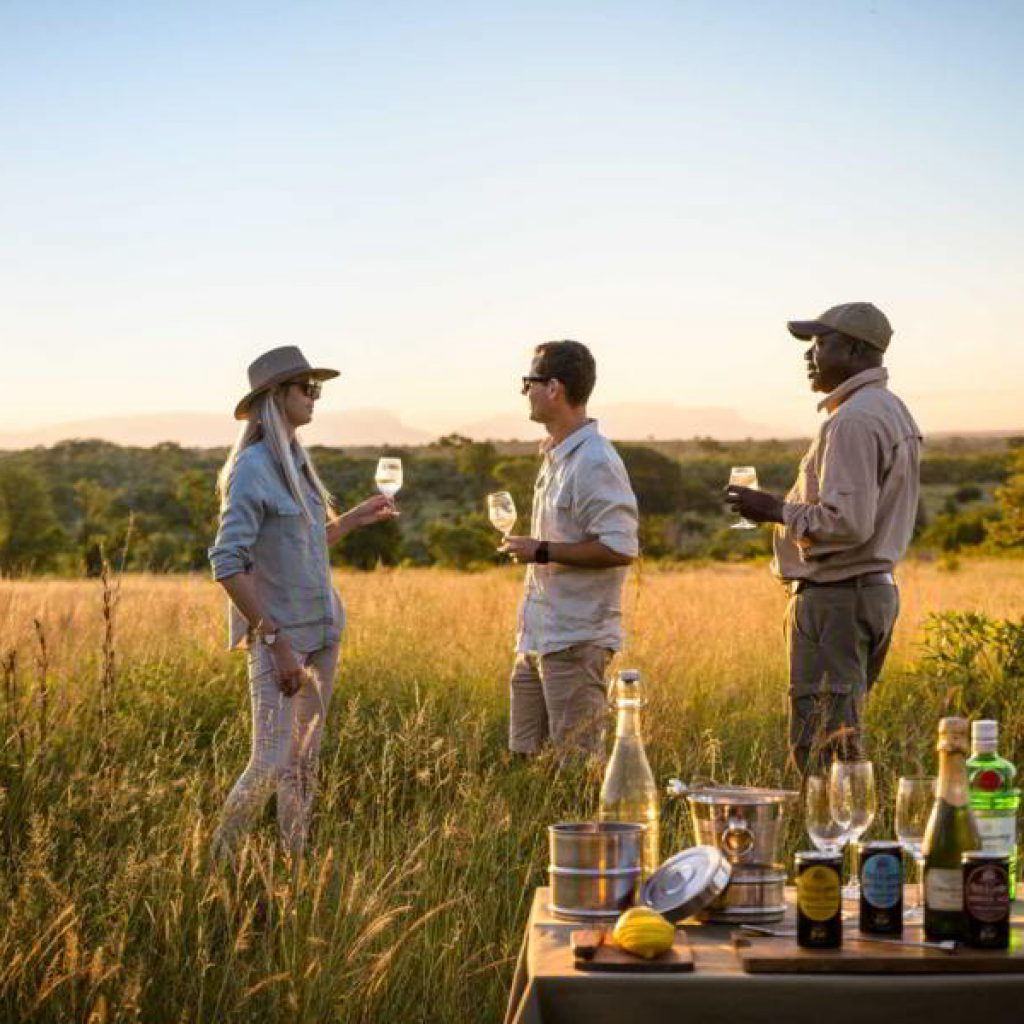Central Kalahari and Makgadigadi
– Botswana
A unique desert landscape
An infinite void of deserted ever-changing landscape awaits all who journey to the world’s largest sand basin; the legendary Kalahari Desert. This far-stretching desert conquers and reign supreme across six African countries, with its crown jewel laying in the heart of Botswana, known as Central Kalahari.
Although a vast arid region of red desert sand, Central Kalahari is carpeted by grass-covered dunes, dotted by ancient baobab and acacia’s, and flourishing with vegetation.
The protected land of the Central Kalahari Game Reserve was established as a refuge, to protect the traditions of the San Bushman, and continues to be a sanctuary utilized as hunting ground for some of Africa’s oldest inhabitants. Walk with Bushman and listen to their tall tales of ancient folklore passed on from generation to generation.
Don’t be alarmed when visions of dry riverbeds appear to be overflowing with refreshing water, because the marriage you’ll see is known as Deception Valley.
The apocalyptic images of the Makgadikgadi Pans are the largest salt pans of its kind in the world. Absolute desolation, sounds of imposing silence, and sublime yet daunting sights of glistening saline land stretches beyond the horizon; lending itself intimately to the absence of time, moments of introspection and harmonious solitude.
Best season to visit the Kalahari
Rains refresh the parched land during the months of November to March and from April to May, the Makgadikgadi Pans retain water. Many areas of the pans are inaccessible by vehicle during this season, but the migration of flamingos may be viewed from the safety of an aircraft.
Dry season sets in during April and lasts until September. Game viewing is at its heights in April to July.
Seasonal Changes
When the rain sets in and pours across the saline encrusted pans of the Makgadikgadi, the arid landscape transforms into a majestic oasis.
White dry flaky pans become shallow pools of sanctuaries, attracting more than 30000 breeding pairs of pink flamingos.
The region plays host to the migratory march of wildebeest and zebra, not to mention the predators that hunt them down. Great white pelicans, duck and geese migrate to the salt pans when the water levels raise and the grass grows lush.

Advice from Safari Russ:
“You can feel the space here like few other places on earth! It’s almost as if the stars are closer and the air is thinner. We see this as a wonderful complimentary experience if you planning to visit the Okavango Delta”
The San of the Kalahari
The San Bushman occupied African land some 22000 years ago. In the 19th century, these nomadic hunters were merciless shot on sight by earlier setters, sheep and cattle farmers. Since then the San Bushmen have been disregard in matters of government, economy and land ownership.
Initially the Central Kalahari Game Reserve was established in 1961 to preserve and protect the San and their traditional lifestyles. Nonetheless, in the mid 1990’s, the San people were forcefully relocated into resettlement camps on the outskirt of the reserve, which has recently been deemed by the high court as unconstitutional. Recent rulings awarded the San Bushmen freedom to return to the Central Kalahari Game Reserve.
Greenlife Safaris Testimonials

– Safari Russ –
African Travel Expert
TELL US YOUR TRAVEL IDEA
More holiday and safari ideas
 Malaria Free Family Safari and Cape Town
Malaria Free Family Safari and Cape Town Romantic South Africa
Romantic South Africa Best of Botswana
Best of Botswana Best of Namibia
Best of Namibia Best of Zambia
Best of Zambia Bush and Beach Duo
Bush and Beach Duo






